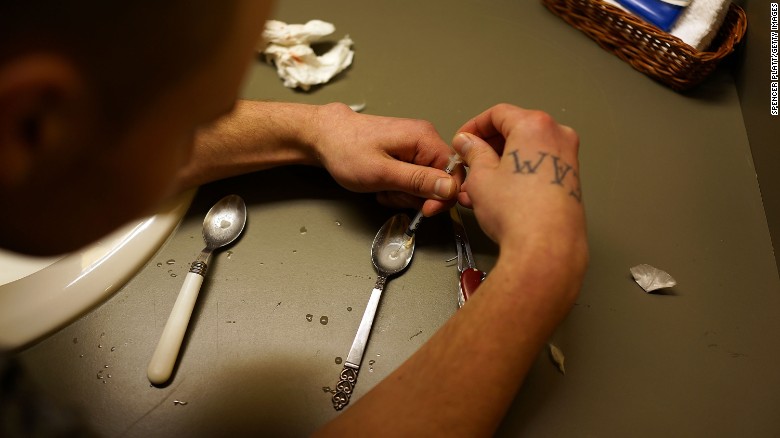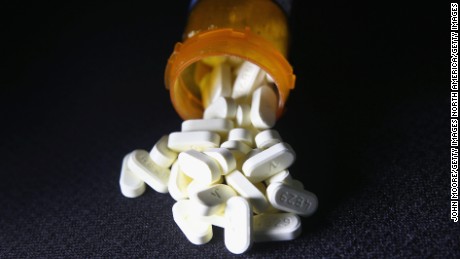Story highlights
- One in 20 adults -- a quarter of a billion people between 15 and 64 -- used at least one drug in 2014
- Heroin use in the United States is up 145% since 2007, the report found
(CNN)Worldwide, drug use has remained steady over the past four years, according to a report released today by the United Nations Office on Drugs and Crime. However, researchers found that heroin use in the United States is up 145% since 2007.
One in 20 adults -- roughly a quarter of a billion people between ages 15 and 64 -- used at least one illegal or improperly used drug in 2014, according to the World Drug Report 2016. Though the numbers have not grown in proportion to the global population, new trends have developed, including increased sales in anonymous online marketplaces.
"The darknet is becoming a very popular way for people to get drugs," said Joseph J. Palamar, an assistant professor at NYU Langone Medical Center who was not involved in the new research.
"This raises concerns in terms of the potential of the 'dark net' to attract new populations of users by facilitating access to drugs in both developed and developing countries," the authors wrote.
The darknet is not the only marketplace for illicit drugs. Palamar said new psychoactive compounds that are chemically similar to illicit drugs are legally sold and purchased on the "regular" Internet. He described some sites as being "pretty much like eBay," complete with user ratings that drive business to those selling higher-quality, more pure drugs.
The U.N. researchers also reported gender differences in drug use. Men are three times more likely than women to use cannabis, cocaine or amphetamines, while women are more likely to take opioids and tranquilizers for non-medical purposes.
Globally, the number of people using heroin, opium and morphine has changed little in recent years, the report indicated. In 2014, a total of 17.4 million people used these drugs, amounting to 0.4% of the global population age 15-64. What has changed, though, is the regions where people are using.
"Heroin use increased in North America in the past decade, which resulted in an increase in the level of heroin-related deaths," the report found. For 2014, the U.N. researchers estimated that 914,000 people 12 or older had used heroin in the past year, a 145% increase since 2007. Yet, past-month users of heroin in 2014 amount to 435,000 Americans, according to a report from the Substance Abuse and Mental Health Services Administration (PDF).
"Because heroin use is not as common as the use of other illicit drugs, monitoring both past month and past year heroin use provides additional context for interpreting the trends," the substance abuse report authors say.
Further highlighting just how bad the situation is in the United States, the report found that deaths related to heroin have increased fivefold since 2000. Worldwide, the overall number of drug-related deaths remained stable, with an estimated 207,400 in 2014. Overdose deaths, most caused by opioids, composed up to half of all drug-related deaths.
In other health impacts, 14% of the 12 million people who inject drugs are living with HIV, and 29 million people are dependent on drugs.
In the United States, opioid drug use has been frequently described as an epidemic. Worldwide, the U.N. researchers found a total of 33 million opioid users in 2014.
Other recent reports, relying on different methodologies and definitions, suggested a more hopeful view.
"Among adults aged 18 to 64 in the U.S. during 2003 to 2013, the percentage of nonmedical use of prescription opioids went down," Dr. Beth Han said. In a recently published study, she found a decrease from 5.4% in 2003 to 4.9% in 2013. That said, she also found significant increases in the prevalence of prescription opioid use disorders, frequency of use and drug-related deaths.
"I believe opioid use is underreported," Palamar said. Based on his own work, 12.4% of students reported lifetime nonmedical opioid use while 1.2% reported lifetime heroin use. However, self-reported drug use can easily be under- or overestimated, he said.
For instance, he and his colleagues tested hair samples of people outside clubs and festivals in New York and discovered that four out of 10 people who said they took only Ecstasy (Molly) also came up positive for bath salts (a lab-created drug chemically similar to cathinone, a stimulant).
He cited a recent European report that unearthed 101 new street drugs in 2014 alone. Most were synthetic cannabinoids, and in second place were synthetic bath salts, known on the street as flakka. Unintentionally, then, people here and elsewhere may be mixing drugs or taking a drug cut with something else they are unaware of, he said, which could lead to unknown health consequences.
"We found flakka in someone's hair who thought she'd taken Ecstasy," he said.







